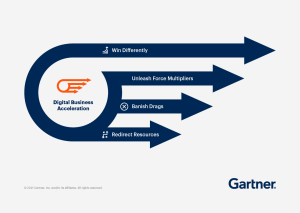How Can a CIO Advisory Help Align IT Strategy With Business Goals?
How Can a CIO Advisory Help
Many IT departments struggle to evolve from an internal service function into a strategic partner of the business. This is usually due to lack of leadership, budget constraints and a disconnect between the IT team and top-level business goals. The right relationship accelerates and enables the achievement of company goals, engages customers and employees, and drives innovation in both product and process. The wrong relationship impedes growth, reduces productivity and profitability, and creates discontent and frustration within the organization.
A CIO advisory can bridge this gap by helping the IT team better understand how they contribute to achieving the overall business objectives. A good advisor will work with the entire IT department to bolster confidence in IT’s capabilities and build an effective working partnership. The advisor will also serve as a bridge to the rest of the organization by bringing the IT department into business processes and discussions and promoting IT leaders in a way that builds business awareness of IT’s role and value.

In addition, the advisor will help ensure the IT department is delivering on its promise to the business by ensuring that the department’s projects are aligned with company priorities and roadmaps. This is done by providing a clear understanding of what technology solutions are needed to enable top-level business goals. The advisor will also monitor IT performance through various metrics and report on them to the business to highlight areas of improvement and to demonstrate that IT is adding real business value.
How Can a CIO Advisory Help Align IT Strategy With Business Goals?
Another area of expertise is the ability to bring best practice and cost-cutting ideas into the IT conversation. The CIO advisor will understand your budgetary constraints and provide guidance on how to maximize the return on IT investments. They will also establish methods for meeting IT governance standards so that the IT department can be a trusted supplier of products and services to the business.
Finally, a CIO advisor can help to promote the development of IT leaders by acting as a mentor to IT managers and directors. This helps to engender a culture of continuous learning and the sharing of knowledge within the IT department. It also helps to address the issue of the ‘silo mentality’ whereby individuals focus on their own specialisms rather than working together for the success of the business.
Employing a full time CIO can be expensive and there is always the risk that an experienced candidate will not want to take on the job so the advisor can also serve as an interim CIO in this scenario. This enables the head of IT to develop into a CIO and avoids the need for an external CIO to be appointed. The advisor can also provide support as a part time CIO for businesses that do not need a permanent replacement. This is particularly helpful for rapidly growing companies that require a fractional resource to deliver the required level of IT leadership.



Recent Comments